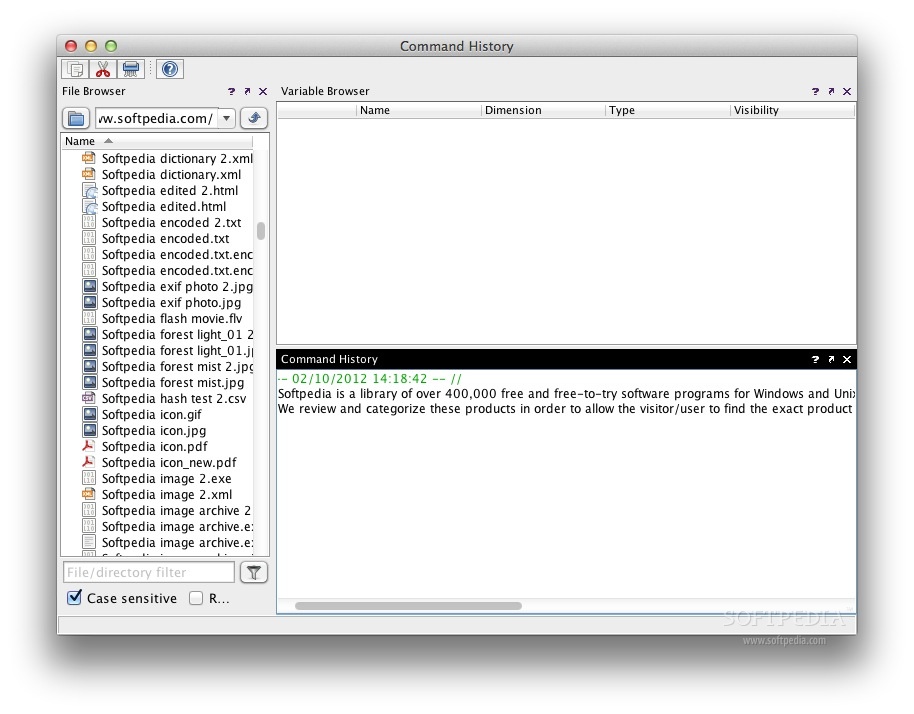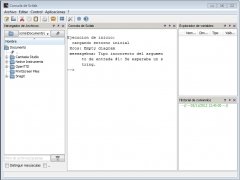

- #Scilab for mac mac os x
- #Scilab for mac software
- #Scilab for mac code
- #Scilab for mac free
- #Scilab for mac windows
#Scilab for mac software
#Scilab for mac code
This new deployment method has the notable advantages of masking code & data as well as providing large computational power. Since 2016 Scilab can be embedded in a browser and be called via an interface written in Scilab or an API. Since 2019 and Scilab 6.0.2, the University of Technology of Compiègne provides resources to build and maintain the macOS version. Since July 2012, Scilab is developed and published by Scilab Enterprises and in early 2017 Scilab Enterprises was acquired by Virtual Prototyping pioneer ESI Group In February 2017 Scilab 6.0.0 was released which leveraged the latest C++ standards and lifted memory allocation limitations.

The ultimate goal of Scilab Enterprises is to help make the use of Scilab more effective and easy. Scilab Enterprises also develops and maintains the Scilab software. Scilab Enterprises develops and markets, directly or through an international network of affiliated services providers, a comprehensive set of services for Scilab users. In June 2010, the Consortium announced the creation of Scilab Enterprises.
#Scilab for mac windows
Linux and Windows builds had been released since the beginning, with Solaris support dropped with version 3.1.1, and HP-UX dropped with version 4.1.2 after spotty support. Thus, OSX 10.4, Tiger, was never supported except by porting from sources.
#Scilab for mac mac os x
Scilab 5.1, the first release compiled for Mac, was available in early 2009, and supported Mac OS X 10.5, a.k.a.

In July 2008, in order to improve the technology transfer, the Scilab Consortium joined the Digiteo Foundation. The Scilab Consortium was formed in May 2003 to broaden contributions and promote Scilab as worldwide reference software in academia and industry. Scilab was created in 1990 by researchers from INRIA and École nationale des ponts et chaussées (ENPC). More are available on ATOMS Portal or the Scilab forge. Scilab Image Processing Toolbox (SIP) and its variants (such as SIVP).

Scilab has many contributed toolboxes for different tasks, such as A simple plot of z = f(x,y) t = ' z = sin ( t ) * cos ( t ' ) plot3d ( t, t ', z ) Toolboxes In this way, Scilab can be used as an interactive mathematical shell. The simplest way to execute Scilab code is to type it in at the prompt, ->, in the graphical command window. Scilab syntax is largely based on the MATLAB language. Due to the open source nature of the software, some user contributions have been integrated into the main program.
#Scilab for mac free
Scilab is available free of cost under an open source license. Xcos is the open source equivalent to Simulink from the MathWorks.Īs the syntax of Scilab is similar to MATLAB, Scilab includes a source code translator for assisting the conversion of code from MATLAB to Scilab. Scilab also includes a free package called Xcos for modeling and simulation of explicit and implicit dynamical systems, including both continuous and discrete sub-systems. While the language provides simple matrix operations such as multiplication, the Scilab package also provides a library of high-level operations such as correlation and complex multidimensional arithmetic. This allows users to rapidly construct models for a range of mathematical problems. By using matrix-based computation, dynamic typing, and automatic memory management, many numerical problems may be expressed in a reduced number of code lines, as compared to similar solutions using traditional languages, such as Fortran, C, or C++. The language provides an interpreted programming environment, with matrices as the main data type. Scilab is a high-level, numerically oriented programming language. Scilab puts less emphasis on syntactic compatibility with MATLAB than Octave does, but it is similar enough that some authors suggest that it is easy to transfer skills between the two systems. Scilab is one of the two major open-source alternatives to MATLAB, the other one being GNU Octave. It can be used for signal processing, statistical analysis, image enhancement, fluid dynamics simulations, numerical optimization, and modeling, simulation of explicit and implicit dynamical systems and (if the corresponding toolbox is installed) symbolic manipulations. Scilab is a free and open-source, cross-platform numerical computational package and a high-level, numerically oriented programming language. BSDs (e.g., FreeBSD), Linux, macOS, WindowsĮnglish, German, Spanish, French, Italian, Japanese, Portuguese (Brazil), Russian, Ukrainian, Chinese, Czech, Polish


 0 kommentar(er)
0 kommentar(er)
